Some sounds don’t just annoy your dog—they flip a switch.
One second they’re calm.
The next, they’re barking, growling, or pacing like something’s about to explode.
And the worst part? You don’t always hear what they do.
A faint beep.
A certain pitch.
That jingling noise your neighbor’s kid makes every time they bounce past your fence.
To us, it’s background noise.
To a dog, it can feel like a direct threat.
Not every growl is about teeth or territory—sometimes it’s the soundtrack setting them off.
Whether it’s the whine of a vacuum or the snap of a lighter, these 14 sounds are like pressing a panic button in your pup’s brain.
Curious what’s really riling them up?
You might be more responsible than you think.
And your playlist?
Might need an edit.
Vacuum Cleaner
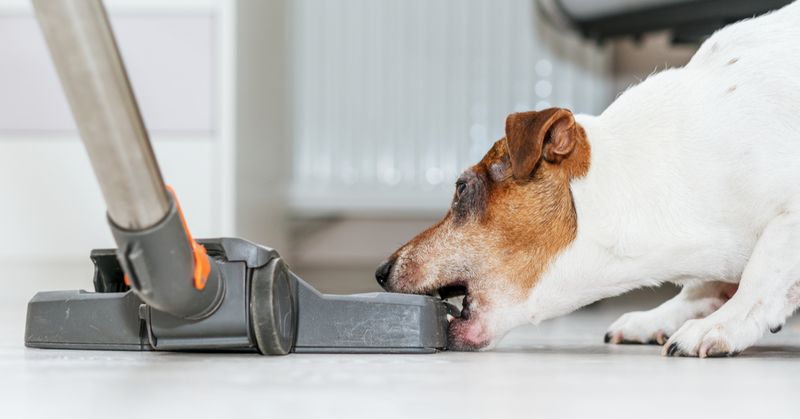
For many dogs, the roar of a vacuum cleaner is akin to an intruder. The loud, constant noise can be startling, causing them to bark or even lunge at the machine. This reaction is likely due to the vacuum’s unpredictable movement and sound, which can seem threatening. Some dogs may perceive it as an animal or intruder to chase away. Additionally, the noise frequency might be irritating to their sensitive ears. Training and desensitization can help mitigate this behavior, allowing dogs to coexist peacefully with household cleaning routines.
Thunderstorms
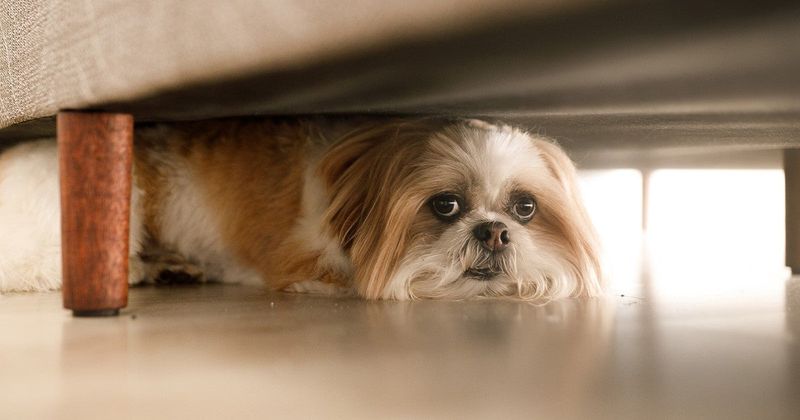
Thunderstorms are notorious for causing fear in dogs, but they can also trigger aggressive behavior. The combination of loud thunderclaps and sudden flashes of lightning can be overwhelming. Dogs may bark, growl, or even become destructive as they attempt to cope. This aggression is often rooted in fear, as the storm’s unpredictability instills a sense of helplessness. Creating a safe space and using calming strategies, such as white noise or anxiety wraps, can help alleviate their stress and reduce aggressive reactions during storms.
Fireworks
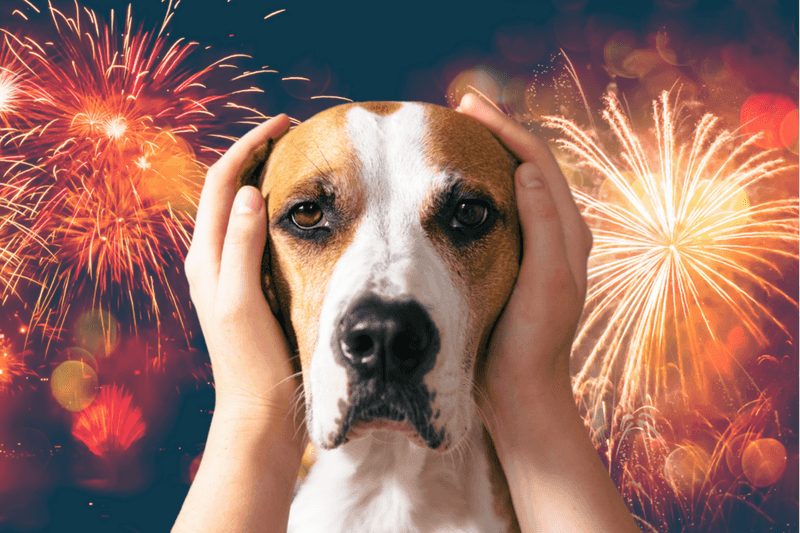
Fireworks are a common trigger for aggression in dogs. The loud, explosive sounds can be terrifying and disorienting. Dogs may react by barking, howling, or even trying to escape the noise. This behavior is often driven by fear and confusion. The unpredictability of fireworks, combined with their intensity, makes it challenging for dogs to remain calm. Providing a quiet, secure area and using calming aids can help manage their reaction. Gradual exposure and training can also decrease sensitivity over time, allowing dogs to handle these events more peacefully.
Sirens

High-pitched sirens can provoke a range of reactions in dogs, from howling to aggressive barking. These sounds can be irritating and may mimic the frequencies of other animals’ distress calls. Some dogs interpret sirens as a call to action, resulting in heightened alertness and protective behaviors. The suddenness and intensity of sirens can also be disorienting. To manage this, exposing dogs to recorded siren sounds in a controlled environment may help desensitize them. This can reduce their aggressive responses when real sirens disrupt the peace.
Doorbells

The sound of a doorbell often signals the arrival of a stranger, stirring territorial instincts in dogs. This can lead to aggressive barking and an excited demeanor. Dogs may perceive the doorbell as a prompt to guard their home. The anticipation of a new person can heighten their senses, causing them to react defensively. Training dogs to associate the doorbell with positive experiences, such as treats or commands, can help reduce aggressive responses. Consistent repetition can reshape their behavior, making doorbell rings less of a stressor.
Car Horns
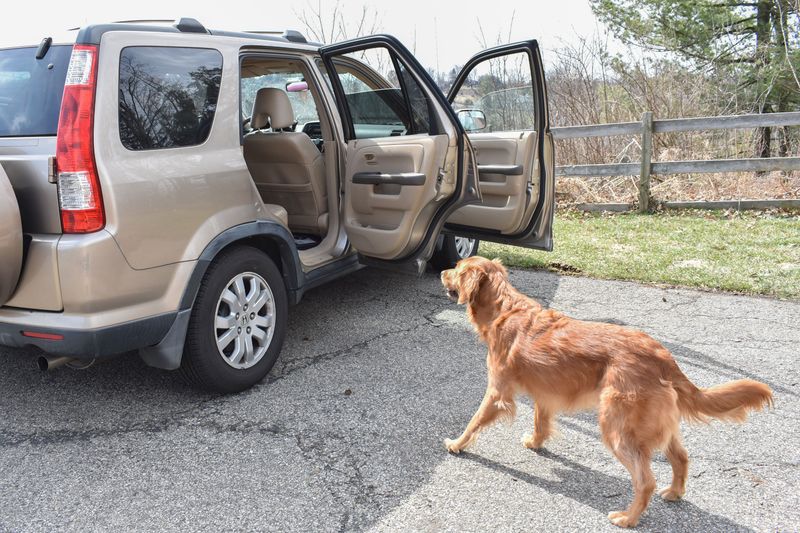
Car horns can startle dogs, leading to bursts of aggression. The sudden, loud honk can jolt them, especially if they are unaccustomed to traffic noise. This response is often a mix of surprise and defense, as dogs may see the noise as a threat. In urban environments, where car horns are frequent, dogs may become anxious or agitated. Gradual exposure and reassurance from owners can help dogs acclimate to these sounds. Over time, their response can shift from aggression to mild alertness or even indifference.
Lawn Mowers
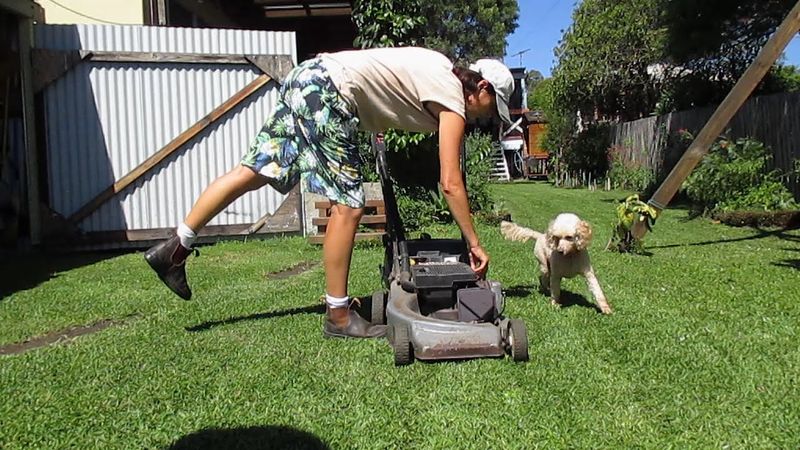
The mechanical growl of a lawn mower can provoke aggressive behavior in some dogs. The noise and vibration may seem threatening, triggering a protective or defensive response. Dogs might bark or attempt to chase the mower, viewing it as an intruder. This reaction can be amplified if the mower moves unpredictably across their territory. Desensitization through controlled exposure and positive reinforcement can help diminish this aggression. Teaching dogs to associate the sound with calmness rather than threat is key to harmonious cohabitation during yard work.
Construction Noises
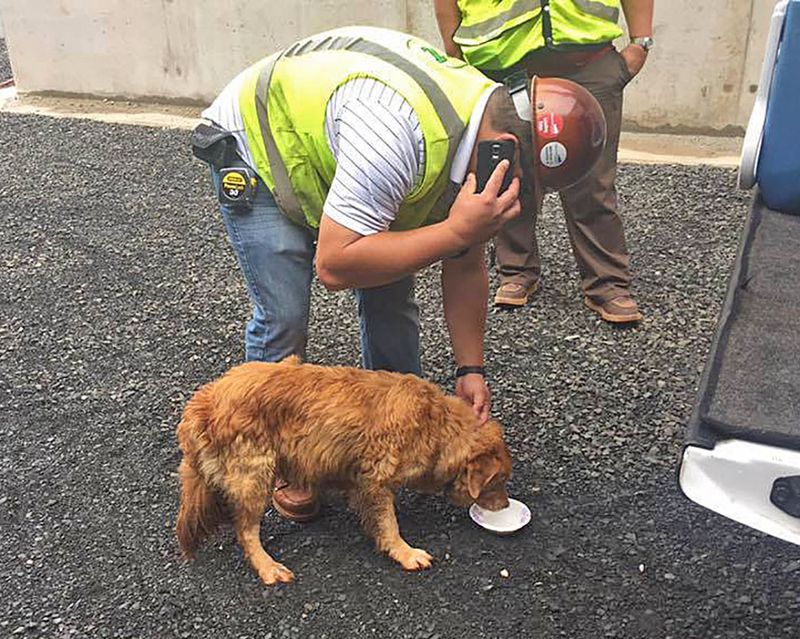
Loud construction noises, such as jackhammers or drills, can incite aggressive reactions in dogs. These sounds often surprise them, causing stress and defensive behavior. The irregularity and volume of construction noise can disrupt a dog’s sense of stability. Dogs may react by barking, growling, or pacing, trying to defend their space. Providing a quiet, comfortable area away from the noise can help soothe their nerves. Over time, dogs can learn to tolerate these sounds better with proper training and reassurance.
Baby Crying
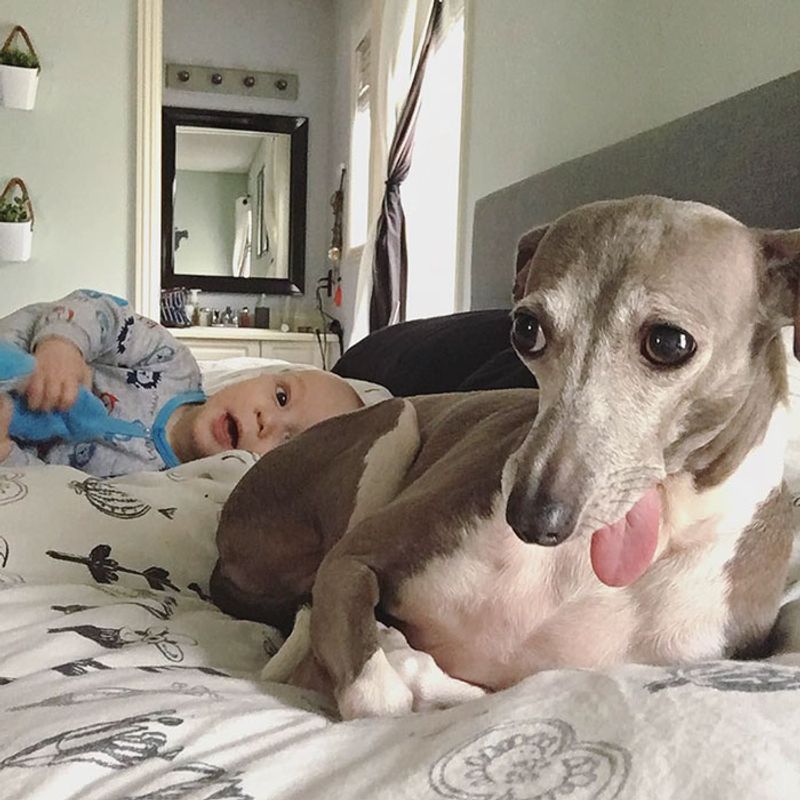
The sound of a baby crying can trigger protective instincts in dogs, sometimes leading to aggressive behavior. Dogs may bark or whine, interpreting the cry as a distress signal. This reaction can be more pronounced in breeds known for their guarding or herding instincts. The unfamiliarity and emotional intensity of a baby’s cry can be unsettling. Teaching dogs to associate the sound with calmness and positive reinforcement can help mitigate their response. Familiarization and gradual exposure can also aid in reducing aggressive reactions over time.
Gunshots
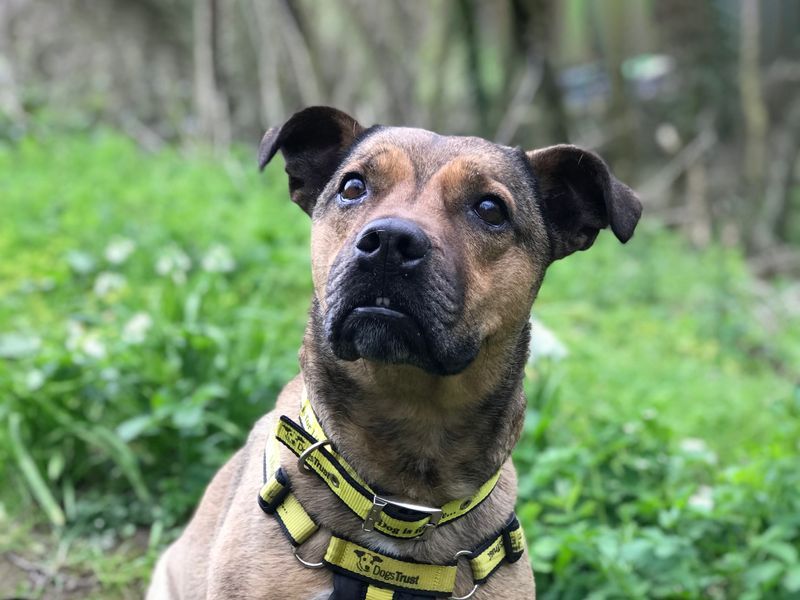
Gunshots are one of the most startling sounds for dogs, often provoking intense fear and aggression. The suddenness and volume can trigger a fight-or-flight response. Dogs may bark uncontrollably, try to flee, or exhibit defensive behaviors. This reaction is rooted in the instinctual need for self-preservation. In areas where gunshots are common, such as hunting zones, acclimatization can lessen these reactions. Using recorded sounds for desensitization can help dogs adjust, teaching them to remain calm in real-life situations.
Loud Music

Loud music, especially with heavy bass, can trigger aggressive behavior in dogs. The vibration and volume can be overwhelming, causing stress and agitation. Dogs may bark, pace, or attempt to escape the noise. The unfamiliarity of a loud party environment can add to their discomfort. To ease their distress, providing a peaceful retreat away from the noise is essential. Gradual exposure and positive reinforcement in similar settings can help dogs acclimate, turning their reaction from aggression to calmness over time.
Whistles
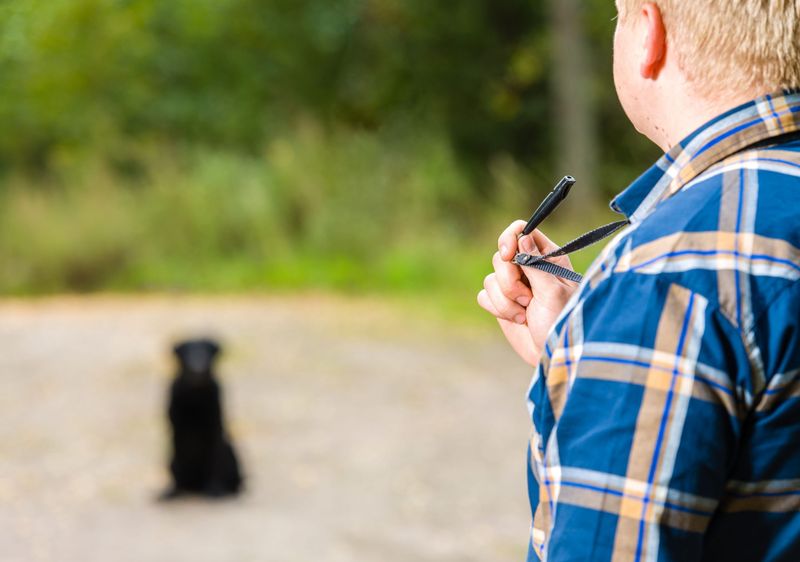
Whistles, especially high-pitched ones, can capture a dog’s attention, sometimes triggering aggressive responses. These sounds may mimic those of animals in distress, causing confusion. Dogs might react by barking or becoming overly alert. The unpredictability of whistles can add to their unease. Training dogs to associate whistles with commands or positive outcomes can alter their perception. Consistent practice in controlled environments can help diminish aggressive tendencies, transforming whistles from a source of stress to a tool of communication.
Motorcycles
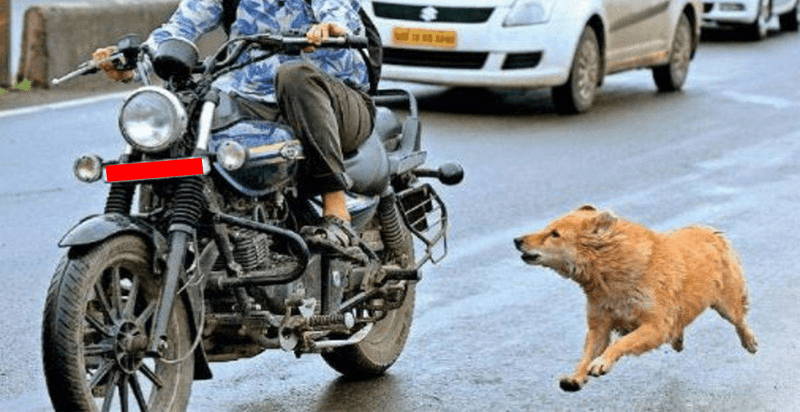
The loud roar of a motorcycle can trigger aggressive behavior in dogs. The combination of noise and speed can be startling, leading to barking or chasing. Dogs may perceive the motorcycle as an intruder, prompting territorial instincts. The unpredictability of the sound adds to their stress. Gradual exposure and training can help dogs become more accustomed to motorcycles. Owners can teach their pets to associate motorcycles with positive experiences, reducing the likelihood of aggressive outbursts over time.
Squeaky Toys
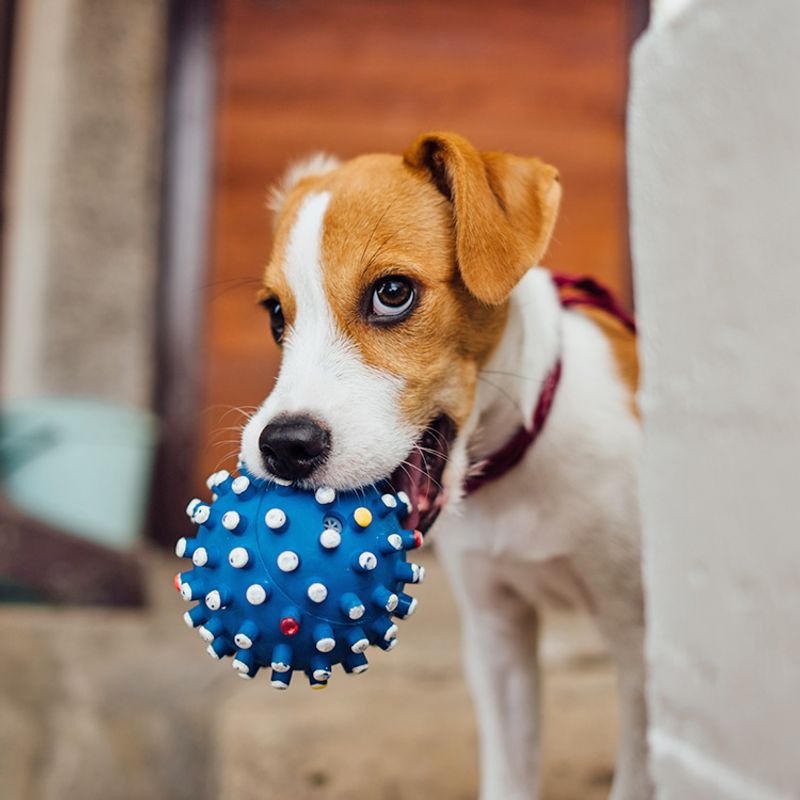
Ever noticed how a simple squeaky toy can grab your dog’s attention instantly? These toys mimic the high-pitched noises of prey animals, triggering an instinctual response. Your dog might growl or pounce, driven by its primal hunting instincts.
This reaction is more pronounced in breeds with strong prey drives, such as terriers or retrievers. While usually playful, if a dog is overly fixated or becomes possessive, the behavior may turn aggressive.
Monitoring playtime ensures that your dog’s excitement remains in the safe zone, preventing any unwanted outcomes or heightened aggression.

